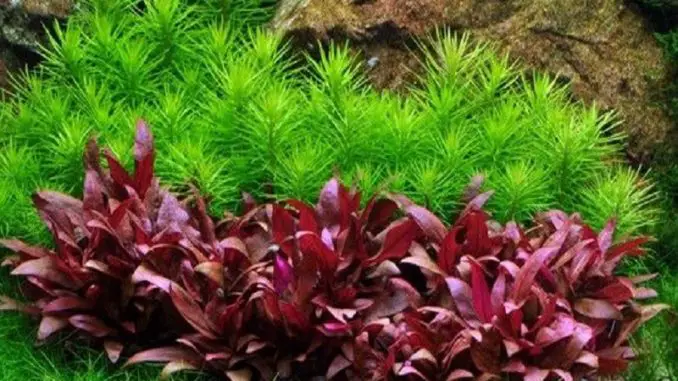
There are lots of reasons to keep live plants in your fish tank, so they have become a common sight in home aquariums. This might prompt you to get some yourself, leaving you with the difficult decision of choosing the species you want.
Most of the plants you see will be green. There’s nothing wrong with green plants, but they’re not for everyone.
People often forget that there are loads of red aquarium plants that could be used instead. These can be very beautiful, filling your tank with color and interest.
This article will help you if you are considering purchasing some red plants. We’ll talk you through why they’re red, how to brighten their colors, and discuss some of the most commonly kept species.
Overview
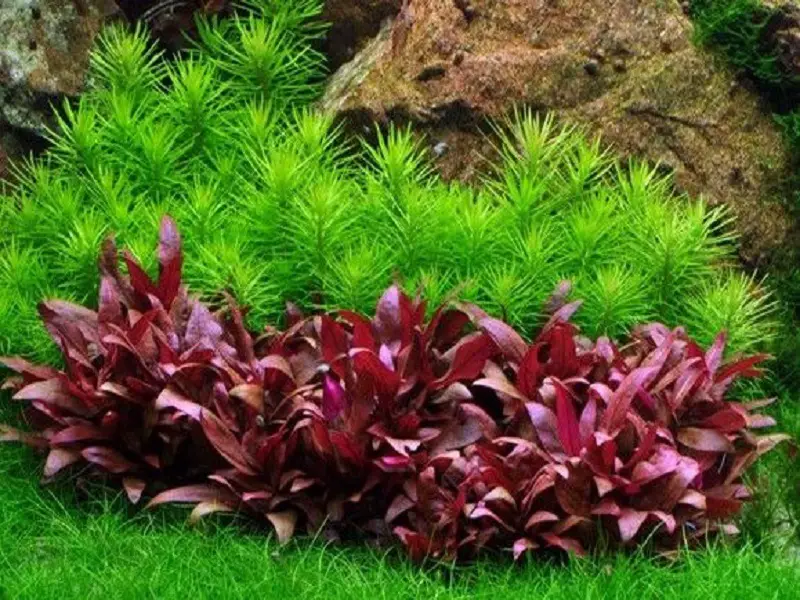
Plants offer many services to an aquarium. They release oxygen during photosynthesis; they help to remove certain pollutants from the water, and they are a great source of shelter for animals escaping tank mates or intense light.
This explains why so many people add them to their tanks, they are great for improving the health of their environment as a whole.
There are so many species to choose from, it can be difficult to pick a favorite.
For most species, green is the dominating color. Though there are lots of beautiful green plants, they often fail to stand out.
Some people may not realize that there are lots of red plants available in the aquarium industry. These provide excellent contrast from the greens and can look truly beautiful.
The red colors are produced by specialized pigments for capturing sunlight during photosynthesis.
These pigments have adapted to absorb green wavelengths, meaning red and blue wavelengths are reflected, so plants appear red/brown.
For most species, brighter lights will bring out stronger colors on the leaves. Supplements like fertilizers and CO2 injections can have a similar effect. Pay attention to the preferences of each individual species though.
In fact, you should always research anything you want to add into your tank thoroughly before purchasing.
Popular Varieties
There are lots of red aquarium plants that you can add to your aquarium. Below we describe some of the most popular species to help you reach a decision.
The choice tends to come down to personal preference, but some people are looking for a species to meet specific needs.
Ludwigia Repens
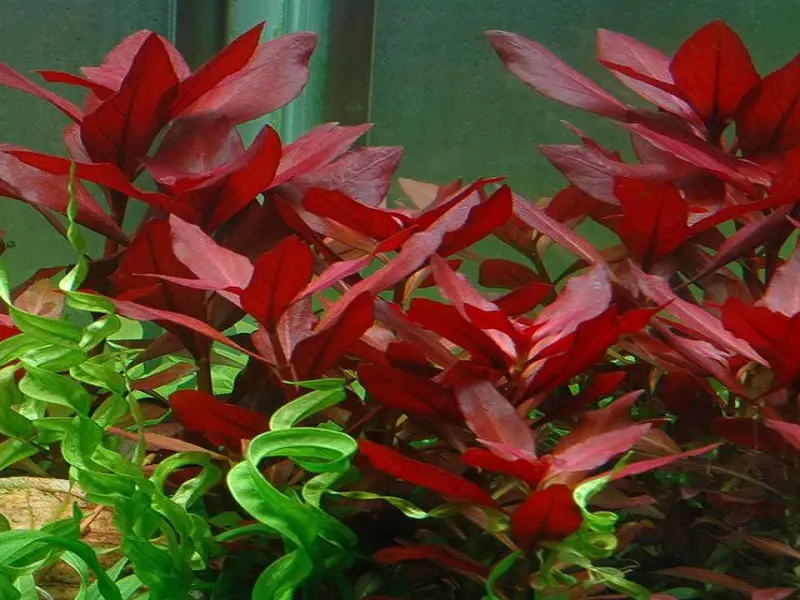
Ludwigia Repens is one of the most commonly used red aquarium plants, likely due to a combination of its color and ease of care.
You might find it under other names, such as Red-Leaf Ludwigia, Red Repens, or Creeping Primrose Willow.
This freshwater species is from the Onagraceae family. It originates in the US and Mexico, where it thrives in tropical rivers, lakes, and ponds.
It is a tall plant, reaching 12-20 inches tall, that works great in the background, adding color to the often-empty spaces higher up in the aquarium.
The plant isn’t always red. Sometimes the leaves are varying shades of green, but you’ll be able to see which plants are which color when purchasing them from the store.
Some varieties are a very deep red; these are the most sought-after.
Ludwigia Repens is a hardy and undemanding species, so it is easy to design a suitable setup. The water should be kept at a temperature between 68-82°F and a pH of 6.0-8.0.
They also enjoy moderate-high lighting for 8-10 hours a day. You shouldn’t need to supply CO2 injections or fertilizer.
This plant grows quickly. To maintain it, you simply need to trim the tops of the stems when they grow too long.
If you want to propagate the plant, you can plant the trimmings to form a whole new plant, as long as the trimming has leaves attached.
Ludwigia Palustris
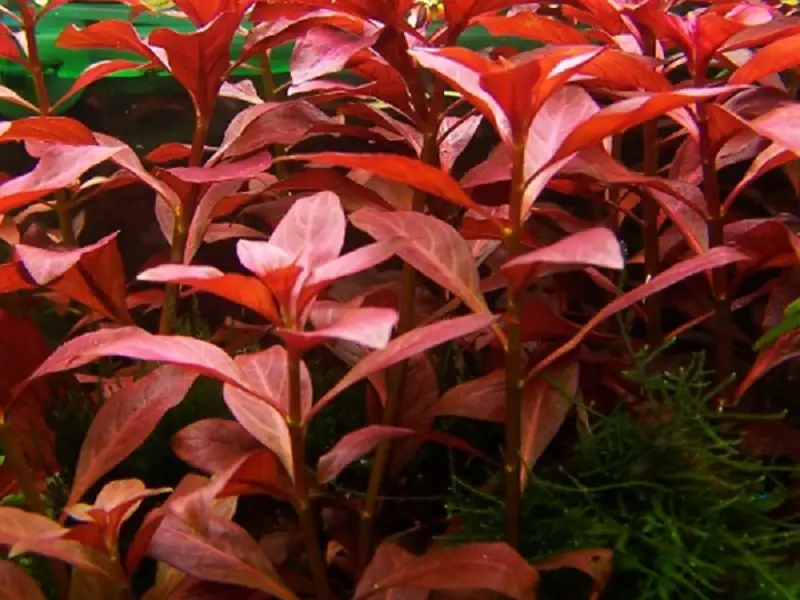
This is a closely related species to Ludwigia Repens, it shares the same genus and is a fellow member of the Onagraceae family.
Ludwigia Palustris (also known as Marsh Seedbox and Water Purslane) is a tall North American species that can reach well over 12 inches. It grows very fast too, which will require more frequent trimmings.
Under intense lighting, the species displays powerful red colors across the leaves and stems. Make sure you buy the correct variety though, as it can be found in red and green.
An iron-rich substrate also helps to bring out bright colors, but it’s less essential. The same goes for CO2 injections.
Ludwigia Palustris is a sturdy plant that can be kept in a range of conditions. Heat the water to 59-77°F and maintain a pH of 5.0-7.0.
It can grow immersed and submerged, as it would naturally grow on lake and river banks, which shows its strong and adaptable nature. This makes it a great addition to a paludarium too.
Ludwigia Palustris is another easy plant to propagate by replanting trimmings, so you can soon multiply your stock.
Lobelia Cardinalis
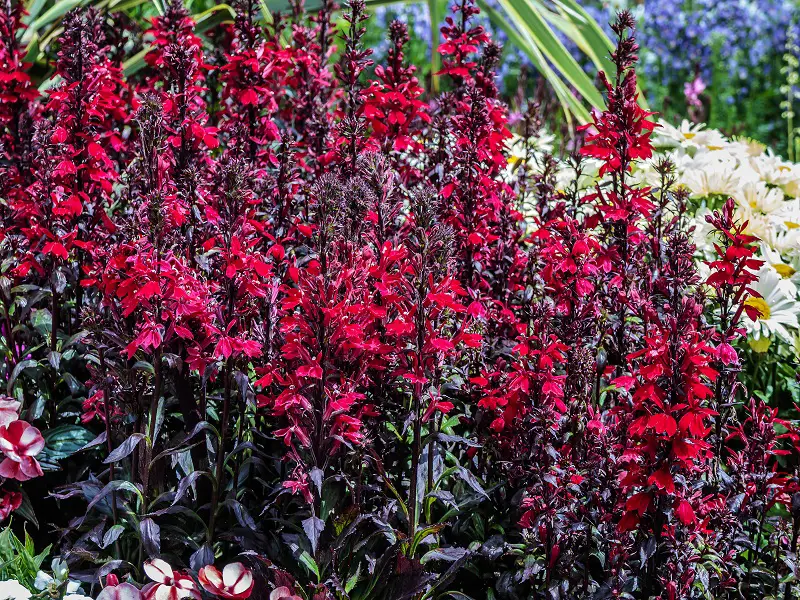
This species is known as the Cardinal Flower or Cardinal Plant. It is a flowering plant in the Campanulaceae family.
It’s native to North, Central, and South America, enjoying the tropical climate in all wet places from rivers to swamps.
The popularity of Lobelia Cardinalis comes from the intensely red flowers that bloom. This color is powerful and even stands out against other red aquarium plants.
The leaves are green on top and red/purple underneath. They are broad and oval with toothed edges.
The height of each plant can vary from 4 to 12 inches, mostly because there are a few varieties you can buy. This means it’s possible to put Lobelia Cardinalis in all areas of the tank.
To maintain the strong colors, fertilizers and CO2 injections will be helpful. The plant will survive without them though. Moderate or intense lighting is required.
Set your heater to 63-82°F and maintain a pH of 6.0-7.0. Use fine gravel or sands as a substrate.
Propagation is easy. Cut side shoots and plant them separately, or do the same with anything you’ve pruned from the top.
This is a particularly beautiful species that is easy to care for, a perfect combination.
Pogostemon Stellatus
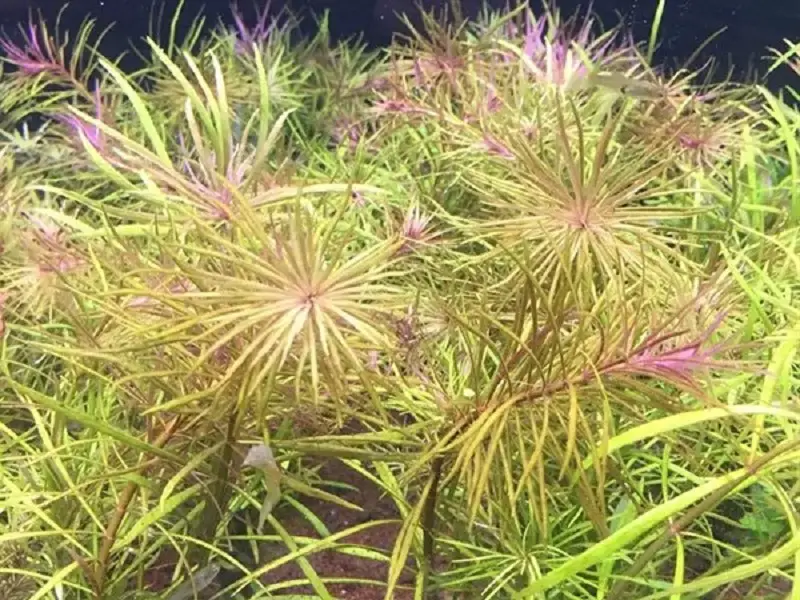
Pogostemon Stellatus, or Broad Leaf, is a member of the Lamiaceae family.
It originates in eastern and southeastern Asia and Northern Australia. There it inhabits rivers and swamps in tropical climates.
It is easy to keep a healthy plant in your aquarium but bringing out the best colors can be more challenging. This has hurt its popularity in the aquarium industry.
To bring out the best colors, supplements will be needed. This might mean fertilizers or CO2 injections. Bright lighting is a must.
Pogostemon Stellatus comes in lots of different varieties so you might find a few colors and shapes available when searching for some.
It usually has thin, narrow leaves branching off from a stem that can reach 24 inches. This will require pruning if you don’t have a large aquarium.
This species is happy in a broad range of conditions. Temperature can be anywhere from 59°F to 90°F, and pH can be between 5.0 and 7.0.
Use a fine-grained substrate across the bottom of your tank.
To propagate, cut the top of a stem and plant this in the substrate. Make sure the cutting has some leaves for photosynthesis.
Alternanthera Rosaefolia
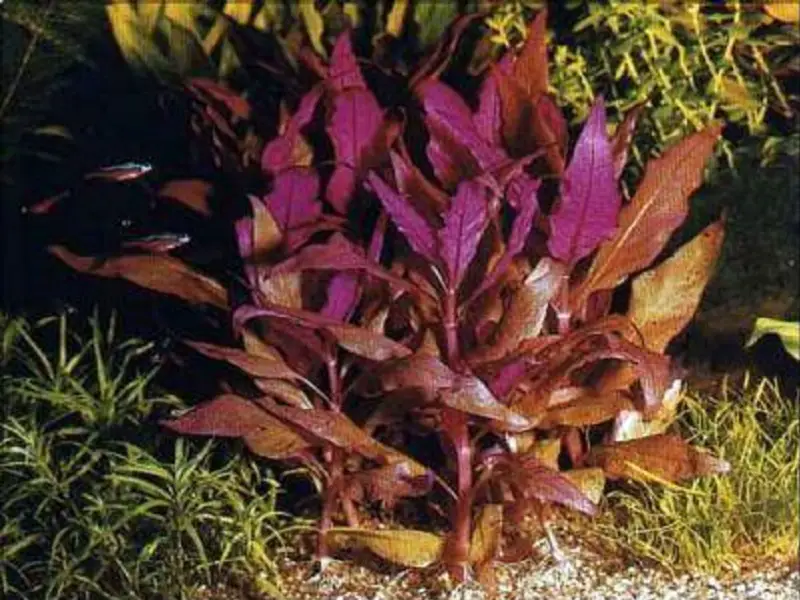
The Alternanthera genus is a common one in the aquarium industry, with many species being kept at home.
This species is from the Amaranthaceae family and is commonly referred to as Magenta Water Hedge.
This name gives you an idea of what it looks like. Red/purple leaves grow up the stem and offer a bush-like appearance when kept densely.
Each plant can reach up to 20 inches making it best suited for larger tanks.
It grows slowly though, so it wouldn’t need to be trimmed as regularly as other species in smaller aquariums. This will be appreciated by beginners who won’t want to be overwhelmed by fast-growing plants.
Alternanthera Rosaefolia originates in South America, where it occupies the waterways of the Amazon. There is high biodiversity here, so it is easy to find suitable tank mates.
Its preferred Amazonian conditions are easy to recreate at home too. Provide a fine gravel/sand, a temperature of 72-82°F, and a pH of 5.8-7.2.
Bright lights are also preferred for maximizing growth and displaying the most vibrant colors possible. Low light will decrease an already slow growth rate, which could cause problems.
High lighting can cause algae problems though, so keep on top of cleaning and maybe add some algae-eating fish to the tank.
This background plant is easy to care for if the aquarium is set up properly. The correct lighting is particularly important, and some aquarists suggest liquid feeds or root tabs.
Propagation is simple; this is another species where you can replant cuttings.
Alternanthera Reineckii
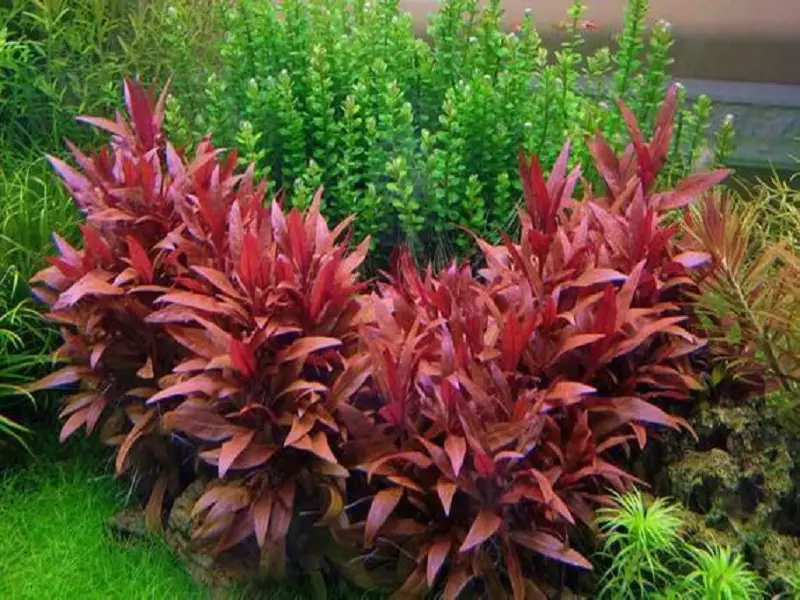
Another species in the Alternanthera genus and therefore the Amaranthaceae family. This plant is very similar to Alternanthera Rosaefolia; it is easy to confuse the two.
Their leaves are a similar pointed-oval shape and the red/purple hues are the same.
Beginners will enjoy Alternanthera Reineckii because of its slow-growing stems and general ease of care.
It comes in many varieties that each one grows to a different height, so by picking the right variety, it could go anywhere in your aquarium.
As a fellow Amazonian plant, conditions will need to be similar to those for Alternanthera Rosaefolia, including the bright lights. Be careful with the increase in algae this causes.
Supplements can be used to support growth, but they aren’t compulsory for a healthy plant.
Maintain a temperature of 72-82°F and a pH of 5.8-7.2. Using soil as a substrate will be good for the roots, but sands work well too.
Use cuttings to propagate. This is easy to do but may take a while due to the slow growth rate.
Echinodorus Cordifolius
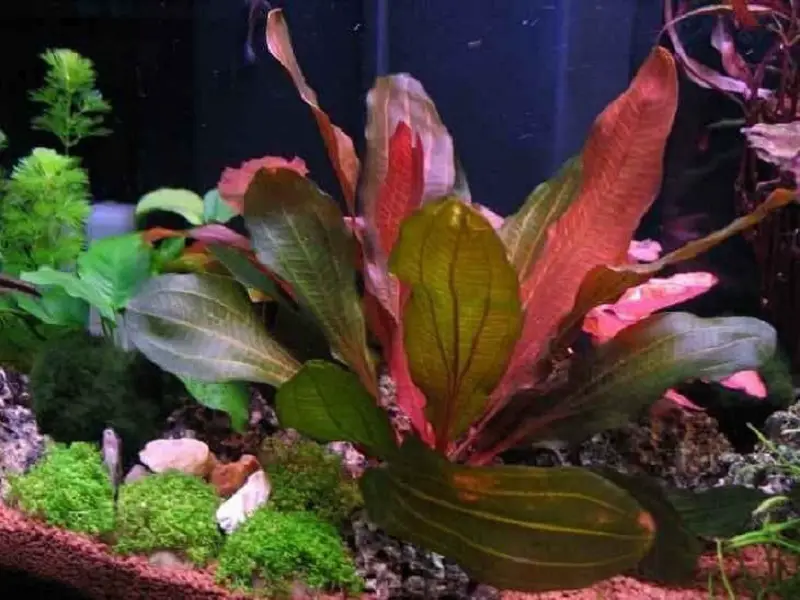
This royal plant is also known as Mud King Red and Marble Queen. It is a member of the Alismataceae family and originates in North, Central, and South America.
This is a very tall plant, reaching up to 24 inches, so it is almost exclusively used in the background. It will require a large tank to fit comfortably.
It will continue to grow above the surface if not trimmed. As a fairly fast-growing species, this may need doing more regularly.
The leaves are large and broad, providing plenty of surface area to capture light. This helps Echinodorus Cordifolius to survive under lower light, though bright lights are appreciated.
The perfect environment would have a temperature of 72-84°F and a pH of 5.0-8.0.
Supplements, such as CO2 injections, are useful for increasing the intensity of colors on display. You can grow a healthy plant without them though.
Steer clear of any products with copper in when keeping Echinodorus Cordifolius as it can cause health problems.
This species can be grown both in and out of the water. Propagation either occurs through side shoots or the production of seeds by flowers.
Ammania Senegalensis
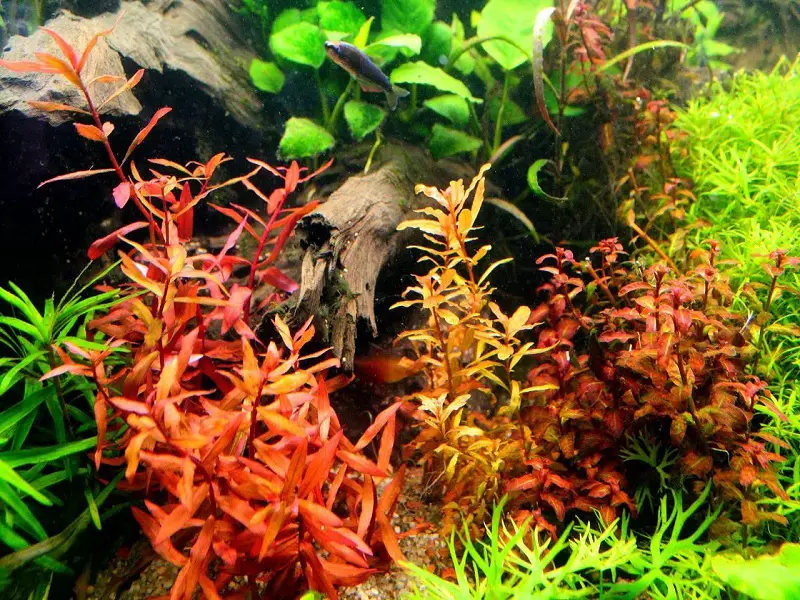
You may have worked out from the name that this species is native to Senegal, in Africa. It’s a relatively new addition to the aquarium industry and is growing in popularity.
This member of the Lythraceae family is sometimes called Copper Leaf Ammania.
Ammania Senegalensis are easy to care for and will mostly look after themselves. You don’t need to provide any supplements, just supply some intense lighting, as they are adapted to living in the shallows.
They will grow quite fast with this lighting, so be prepared to trim them down if you don’t want them to reach their maximum size of 20 inches.
Protruding from this long stem are narrow leaves that could be a range of colors such as red, orange, or yellow.
Maintain a temperature of 68-82°F and a pH of 6.5-7.5.
This is another species that can be propagated by replanting cuttings you’ve taken from the top of the plant.
Rotala Indica
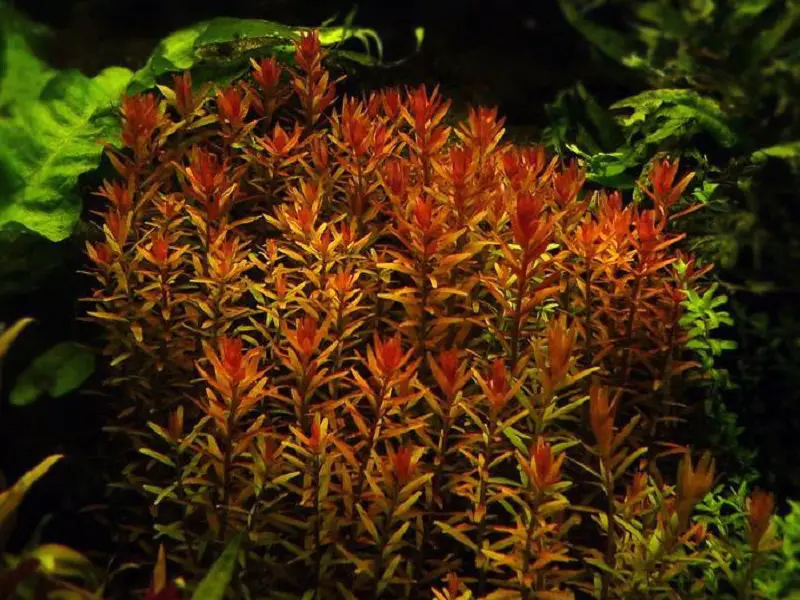
Rotala is another genus you might see a lot as you research red aquarium plants; there are a few species that are commonly kept in captivity.
They are flowering plants in the Lythraceae family, which also include the pomegranate fruit-bearing shrub.
Rotala Indica is native to Southeast Asia but can now be found in rice-growing regions of Europe and North America.
There are a few common names for the species, such as Indian Toothcup and Bonsai Rotala.
The leaves are small and oval, growing in opposite pairs up the stem. The height of the stem itself could reach over 20 inches if left to its own devices, but it is usually shorter.
The stems are red with red/green leaves. When able to flower it will produce small pink petals.
This creeping plant needs a temperature of 64-86°F and a pH of 5.0-7.2. This makes it suitable for most setups.
Supplements aren’t required for growth, but iron-rich substrate may be beneficial.
The light demand of this species is low, but brighter lights will help it to flourish.
Rotala Indica produces side shoots. You can cut these and replant them to propagate or replant trimmings you have taken from the top.
Rotala Rotundifolia
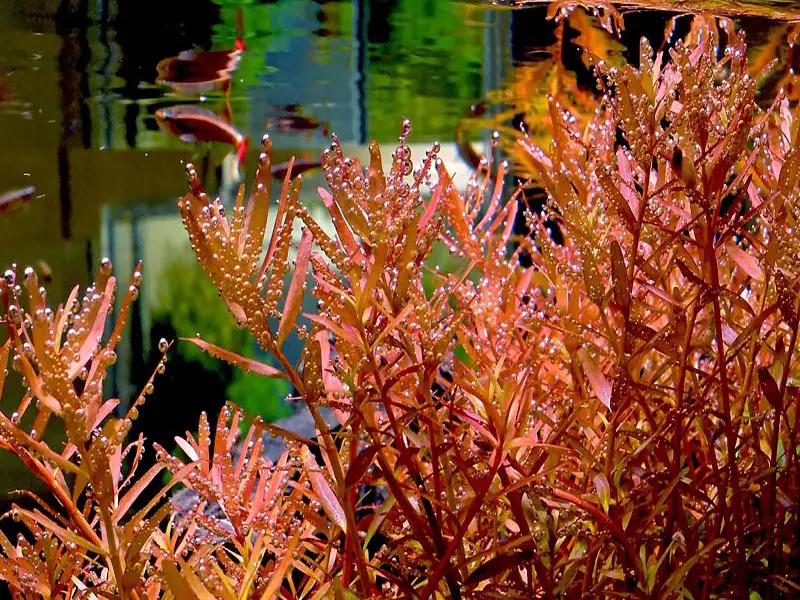
Rotala Rotundifolia, Pink Rotala, Roundleaf Toothcup, Dwarf Rotala, and Pink Baby Tears are all names for the same species in the Lythraceae family.
It is a fast-growing species, which may mean more of your time is spent maintaining it. The more it grows, the bushier it gets. Pruning regularly will help to control this.
Stems have pairs of opposite leaves growing up to the top. Each leaf is small and round. They could be colored green or red; brighter lights will help to bring out the red.
This Asian species is found in swamps and riverbanks where it grows quickly under the bright tropical lighting.
To recreate this habitat at home, use a temperature of 62-82°F and a pH between 5.0 and 7.2. A fine-grained substrate is ideal, such as gravel and sand.
Rotala Rotundifolia will grow under low lights but try to provide more intense lighting to optimize growth and replicate their natural habitat.
Supplements are optional. Things like CO2 injections will help growth, but you should be able to keep a healthy plant without them.
To propagate, just take cuttings and replant them to form a whole new plant.
Cryptocoryne Wendtii
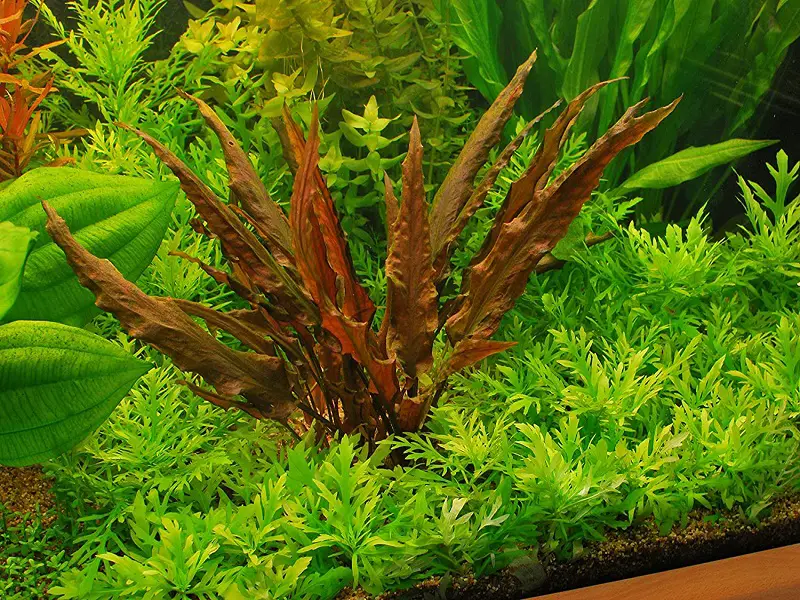
If you’re looking to use low-moderate lighting, then Cryptocoryne Wendtii could be the species for you. It does well in low lighting which makes it easy to bring out the red colors.
The plant is part of the Araceae family and is native to Sri Lanka, though it has now been introduced to Florida.
This species comes in various forms, which has caused some debate over their taxonomic status. Look out for Red Cryptocoryne Wendtii.
The different varieties grow to different sizes, but it is usually best suited for the foreground and midground.
Most have long leaves that can look very powerful when packed together.
These plants live in the shallows of most bodies of freshwater, such as rivers and lakes.
The water in your tank will need to be 74-84°F with a pH of 6.0-8.0. Standard aquarium lighting is fine, but so are slightly dimmer lights.
Nutrient supplements aren’t necessary, though an iron-rich substrate will help to enhance the red colors.
Cryptocoryne Wendtii propagates via runners, which means you can cut these off and replant them to speed up the process.
This is a very easy plant to care for, it would be a good choice for people who haven’t kept live plants before. It doesn’t grow too fast, so it is easier to maintain.
Summary
It is easy to forget that the plant-like in your aquarium (or paludarium) doesn’t have to be green. There are many red aquarium plants that you can choose from too.
Not only can these be used instead of green plants to make a change, but red plants also work great when kept alongside green plants too. The contrasting colors create a vibrant forest in whichever level of the tank you want.
The species you choose is up to you. Red aquarium plants come in all shapes and sizes. Some plants are easier to care for than others, some are taller, some are brighter, and the shade of red can vary too.
This means that there is a species to suit everyone, whatever your needs. Research the plants you want thoroughly to be rewarded with an interesting and brightly colored tank.
What is your favorite red aquarium plant? Let us know in the comments below…

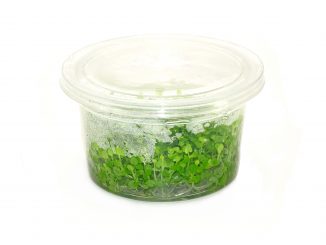
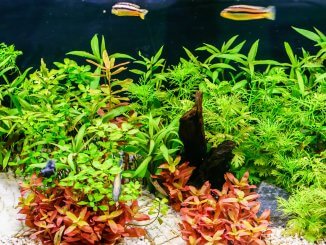
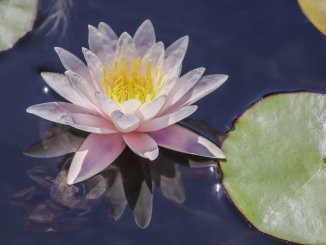
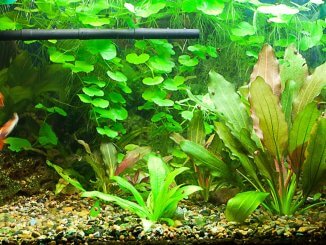
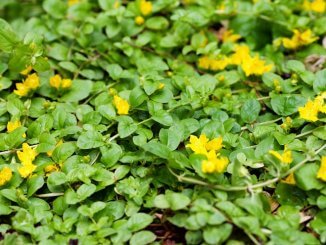
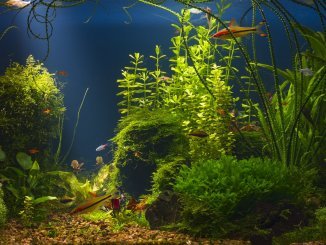
Be the first to comment